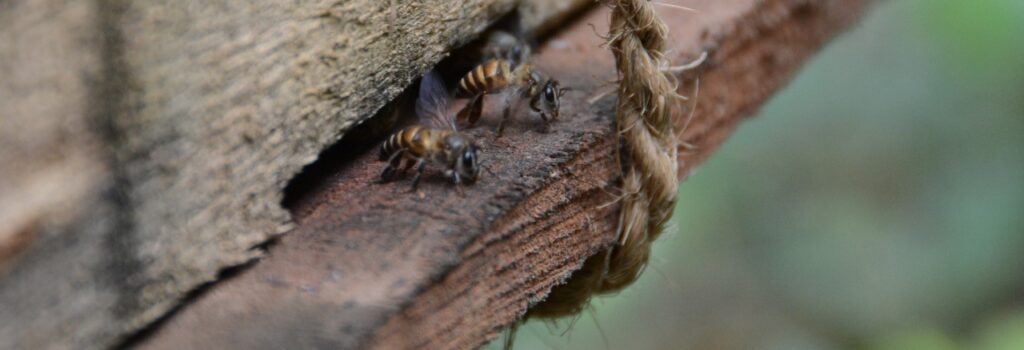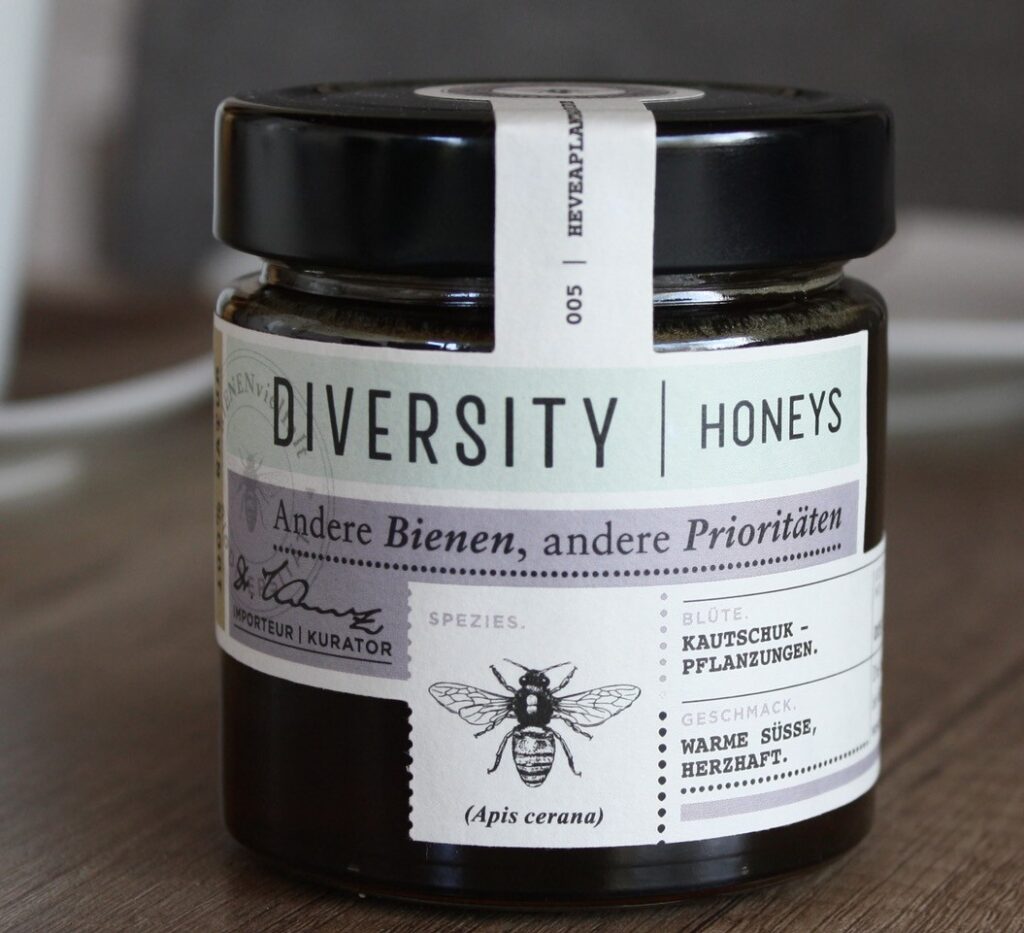Natural rubber trees (Hevea brasiliensis) are, of course, best known for the production of latex milk, which is turned into anything from bottle teats to airplane tires.
At the end of their productive life, usually after about 35 years, the trees are cut down and their wood is used for furniture or other wooden items.
But throughout their life time, for a few short weeks every year, rubber trees also have ‘sweet spots’, literally. Every spring, when the trees grow new leaves to replace those they shed in winter, the tree supplies a sugary liquid to the leaf joints. Initially, until the leaf is fully grown and a balance is struck between demand and supply, rubber trees, like over eager parents, provide too much. This surplus emerges at the base of the leaves via so called ‘nectaries’: Providers of nectar. Insects and humans have long learnt to exploit this: beekeepers bring their hives into rubber plantations to harvest a unique crop. With the help of enzymes, the bees convert the syrup from the tree in their stomachs into honey and store it in their hives as feed for brood and other bees – unless a beekeeper comes and takes a share.
‘Hevea-honey’ from the rubber tree
Diversity Honeys is a licensee of the Fair Rubber Association. In 2016, the company was initially started (as the name indicates) in order to import speciality honeys from Asia. The continent is home to approx. 12 honeybee species (Apis) – in Europe there is only one: Apis mellifera. Honeybees indigenous to Asia play an extremely important role in crop production, as they are perfectly adapted to local climatic conditions and specialised in pollinating tropical plant species.
European red tape meant that it took six years until the first such honeys could legally be imported into Germany. This long period of frustration was the reason for Diversity Honeys (in order to have something to sell) to come up with a unique range of plastic free gardening items, in particular natural rubber seed trays, but that is another story.
Among the honeys Diversity Honeys now imports from India is honey from rubber trees. Smallish honeybees, called Apis cerana (or ‘Indian honey bee’, produce this ‘hevea honey’. It is a rare commodity, because the annual production is restricted by the size of these bees and the limited availability of rubber trees.
A ‘honey sommelier’ characterised the ‘sweet rubber stuff ‘as follows: “Sweet/savoury, apricot jam, tangerine, pleasantly warm and rounded flavours including a hint of smoke”.
Its source: The long-standing Fair Rubber Association supply partner New Ambadi in South India.
Those interested in tasting ‘hevea honey’ and other exotic specialty honeys can order it from here (as long as the order remains within the EU).

Apis cerana – the Indian honey bee produce the ‘hevea honey’.

